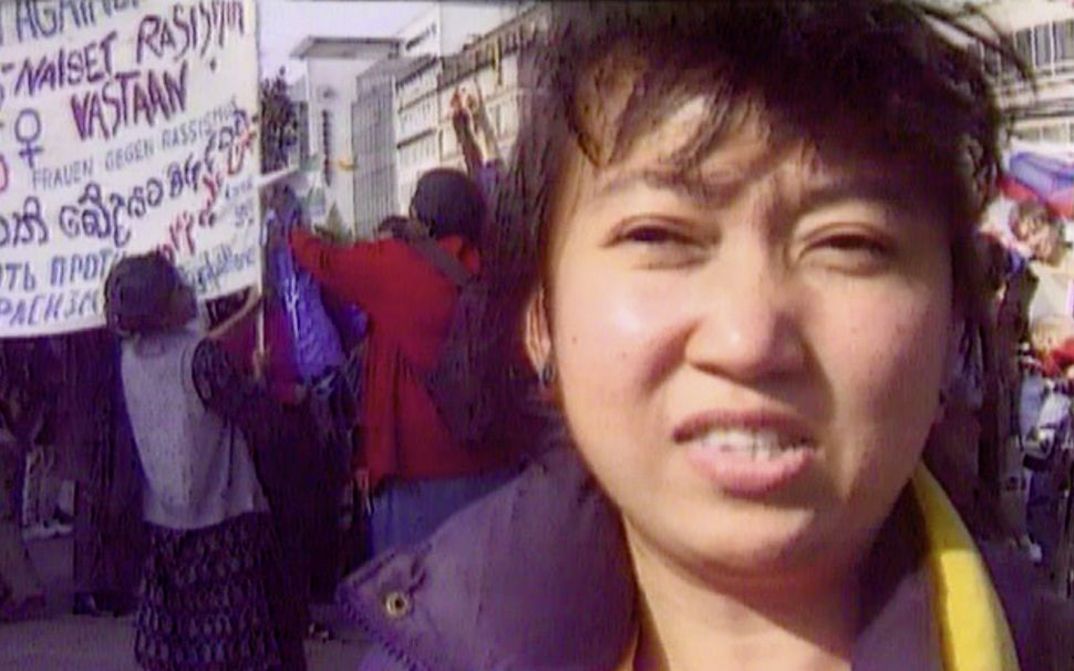Fiktionsbescheinigung Program 5

Mon 14.02.
20:30
Cinema
Akademie der Künste
The „Fiktionsbescheinigung“ explores the question of how culture in general and cinema in particular are related to society and racism. It is dedicated to the work of Black directors and directors of colour in Germany and sees itself as an experiment in shared curatorial responsibility that also seeks to shine a spotlight on a chapter of German film production that has been unfairly neglected.
The film selection was put together by curators Enoka Ayemba and Biene Pilavci, supported by Karina Griffith, Jacqueline Nsiah, Can Sungu and the Berlinale Forum selection committee.
Director
Hito Steyerl
Austria, Germany / 2001
38 min.
/ Original version with English subtitles
Original language
German, English
From 1999 to 2001, Hito Steyerl made a series of short videos, each with the same title: NORMALITÄT 1–X. As she comments at the end of the third part, it was never planned as a series, but what other reaction was possible at a time and place where normality had come to stand for violence? Steyerl passes the thematic baton from each part to the next with characteristic acuity, cutting a zig-zagging path through Germany and Austria on grainy VHS that ends at the 10-year anniversary of reunification, although there is little to celebrate. Desecrated Jewish graves foreshadow anti-Semitic comments on German chat shows, while the same defilements in Vienna flow into shouted expressions of solidarity with Austria in Berlin on the election success of the FPÖ. A bombing in Düsseldorf that targeted Jewish immigrants ushers in a whole series of attacks on refugees, migrants and foreigners across the country. The news ticker on the Hannover U-Bahn reporting on one such attack gives way to the empty promises of the Expo and people of colour in Germany mobilising against racism and capitalism. From the vantage point of now, such normality might seem far away, but there’s always a new normal. (James Lattimer)
Director
Cana Bilir-Meier
Germany, Austria / 2019
16 min.
/ Original version
Original language
English
Two young women wander through a mall. They goof around, try on sunglasses, show off for the camera that is recording them on black-and-white Super 8 film and flick through photos of other people striking similar poses. A series of absurdly contradictory desires can be heard on the soundtrack – to predict the past, to rouse the alarm clock from sleep, to forget what one cannot remember. A day like any other, this could be any place, at any time. Then the date on a memorial plaque allows us to place the scene. We are at the Olympia Shopping Centre in Munich, where nine teenagers with an immigrant background were killed and others injured in a racist attack on July 22, 2016. The photos – plucked, as so often in Bilir-Meier's work, from her family archive – show scenes from “Düşler Ülkesi” (Land of Dreams), a play Bilir-Meier's mother helped put on whose 1982 premiere was delayed by a bomb scare.
Continuities and ruptures emerge between the everyday lives of migrants then and now, between youthful levity and the persistence of racist violence in Germany. (Uli Ziemons)
Director
Forensic Architecture
United Kingdom / 2017
29 min.
/ Original version
Original language
English
On April 6, 2006, a young man named Halit Yozgat was shot and killed in a Kassel internet café. His murder was the ninth in a series of ten committed by a terrorist group called the National Socialist Underground (NSU) between 2000 and 2007. Andreas Temme, an employee of Hessen’s State Office for the Protection of the Constitution, was also present that same day. He claimed to have already left the café at the time of the crime.
Known for how they merge artistic and politic practice, the Forensic Architecture collective took on the murder of Halit Yozgat, precisely reconstructing the minutes before and after the crime in their film 77SQM_9:26MIN. Which elements of Andreas Temme’s statements are true and which are not is the central question of the film, which was shown for the first time at documenta 14 in Kassel. Witness statements are compared and sets of movements reconstructed in a replica of the internet café, while a digital simulation shows how long the smell of the gunshots remains in the air.
The conclusions that can be drawn from the research form a damning indictment of the investigative and judiciary authorities. (Cristina Nord)